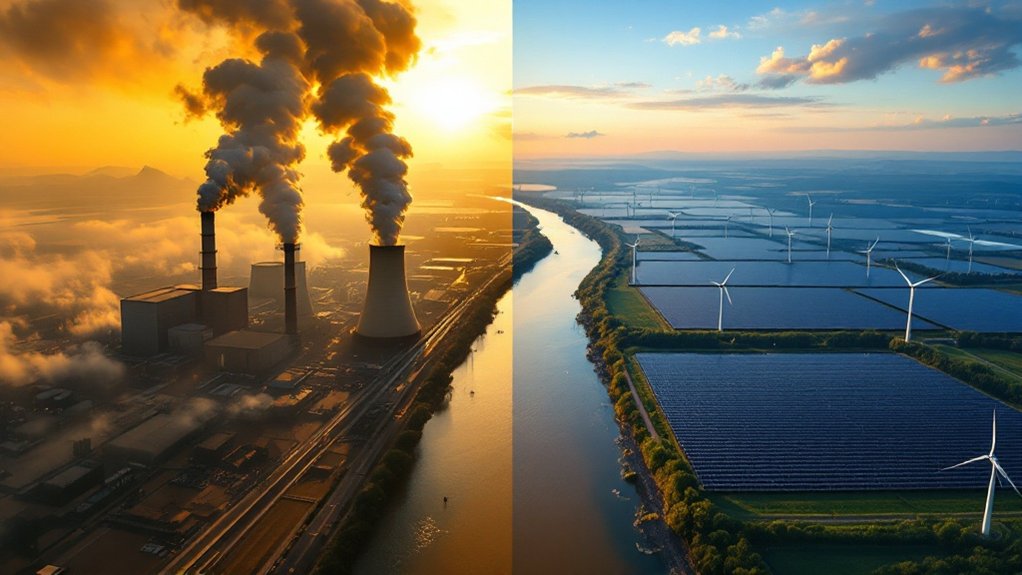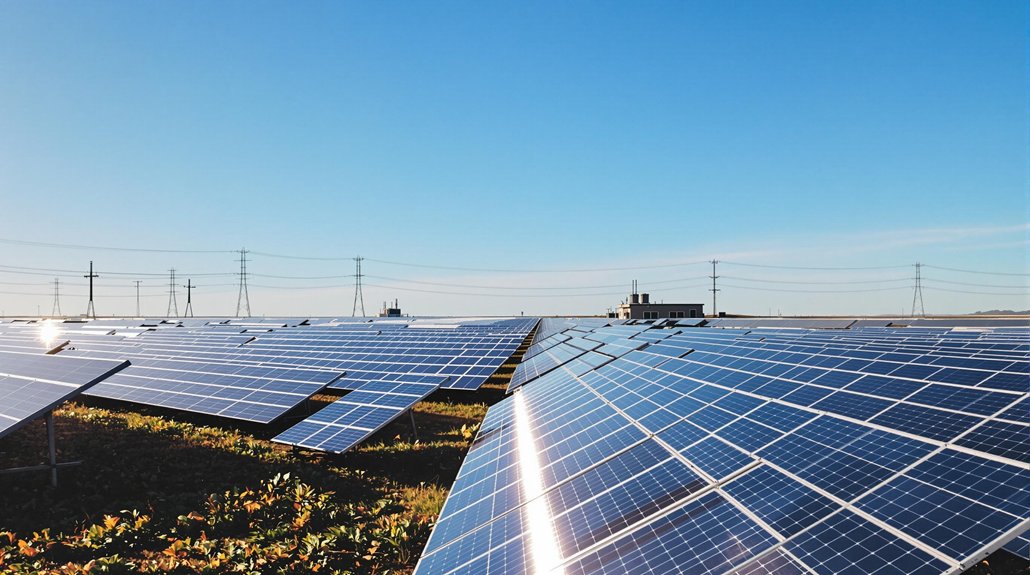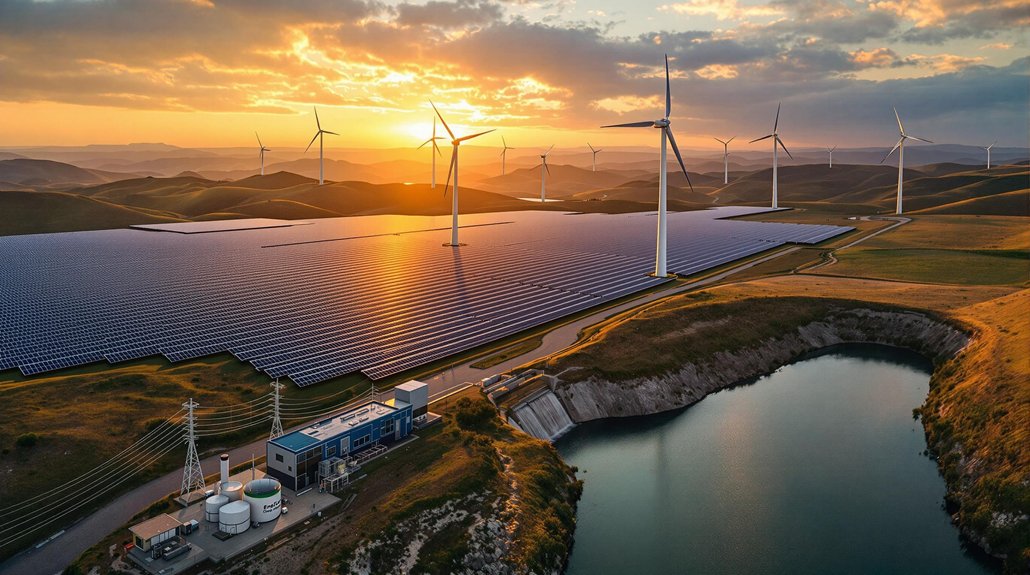Renewable energy offers promising solutions for pollution reduction. While deaths from air pollution have nearly halved since 1990, climate change threatens this progress. Solar and wind power produce minimal pollutants compared to fossil fuels, already reducing sulfur dioxide emissions by 7%. However, not all renewable sources are equally clean. Achieving 100% clean electricity by 2035 could prevent 130,000 premature deaths, with potential economic benefits reaching $1.2 trillion.

As the world battles against rising global temperatures, the future of pollution presents both concerning challenges and promising opportunities. Scientists warn that climate change will likely worsen outdoor air pollution through more frequent wildfires, higher ozone levels, and changing weather patterns that trap pollutants. These effects could reverse some of the progress made in recent decades.
Despite these challenges, there’s good news. Death rates from air pollution have nearly halved since 1990. Many developed nations have seen dramatic improvements. The U.S. has cut carbon monoxide emissions by 79% and sulfur dioxide by 92% since 1990. Lead emissions are down 87% since 2010. European Union countries show similar positive trends.
Progress against air pollution shows real hope: death rates cut in half since 1990, with dramatic improvements across developed nations.
Renewable energy plays a key role in this progress. Solar and wind power produce almost no air pollutants compared to fossil fuels. Studies show that switching to renewables has already reduced sulfur dioxide by 7% and nitrogen oxides by 1%. Experts predict renewable electricity could provide 65% of the world’s power by 2030. In 2019, modern renewable sources contributed 11.2% of global energy consumption, marking significant progress from 8.7% in 2009. Unlike fossil fuels, these sustainable resources replenish naturally on human timescales while supporting both environmental and economic goals.
Not all renewable energy is equally clean, though. Biomass burning and waste incineration are technically renewable but can release harmful pollutants. The combustion of organic materials in biomass power plants makes it the largest pollution contributor among renewable energy sources. Gas plants that back up solar and wind farms also contribute to pollution.
The situation remains especially serious in developing countries, where 99% of people breathe air exceeding World Health Organization limits. Indoor air pollution from cooking and heating with solid fuels continues to cause millions of deaths yearly.
Looking ahead, projections show mixed outcomes. Without action, premature deaths from air pollution could rise by 2050. However, achieving 100% clean electricity by 2035 could save 130,000 lives. The change to electric vehicles, with 20 million expected on U.S. roads by 2030, will further reduce emissions.
The economic benefits are substantial too. The clean energy shift could bring net benefits of up to $1.2 trillion while reducing power sector CO2 emissions by 90% by 2050.
Frequently Asked Questions
How Do Pollution Levels Vary Between Developed and Developing Countries?
Pollution levels are considerably higher in developing countries than in developed ones. While 56% of cities in developed nations exceed WHO air quality guidelines, this jumps to 98% in developing regions.
Developing countries face 90% of all air pollution-related deaths globally. This disparity stems from rapid industrialization, limited resources for pollution control, older technologies, and less strict environmental regulations.
Can Individuals Reduce Pollution Without Government Intervention?
Individuals can make a difference in pollution levels without government action.
People’s daily choices impact air quality and waste production. Using public transportation, carpooling, or biking reduces vehicle emissions. Switching to renewable energy at home and improving energy efficiency helps too.
Community efforts like planting trees and local shopping decrease pollution’s impact.
While individual actions matter, experts note that large-scale changes require both personal and systemic approaches.
What Health Impacts Does Long-Term Pollution Exposure Cause?
Long-term pollution exposure causes serious health problems across multiple body systems. It damages the heart, increasing risks of heart attacks and stroke.
The lungs suffer with conditions like COPD, asthma, and cancer becoming more common.
Brain health deteriorates, with higher rates of dementia and cognitive decline.
Children born in polluted areas often have lower birth weights.
Pollution also weakens immune systems and raises diabetes rates.
Is Carbon Capture Technology Economically Viable?
Carbon capture technology isn’t economically viable without government support. It increases electricity costs by 21-91% for new power plants and requires 25-40% more fuel for coal plants.
It’s currently 9-12 times more expensive than switching to renewables. However, costs have fallen as the market grows, with a 35% reduction between first and second large-scale facilities.
Future viability depends on carbon pricing and continued technological improvements.
How Effective Are International Pollution Reduction Agreements?
International pollution agreements show mixed results. The Montreal Protocol has been highly effective, eliminating 99% of ozone-depleting substances.
European agreements reduced sulfur emissions by up to 80%. However, climate agreements like Kyoto faced challenges from major emitters not participating.
Success factors include clear targets, strong monitoring, financial support for developing nations, and broad participation.
Many agreements lack enforcement mechanisms, making compliance voluntary and sometimes ineffective.









